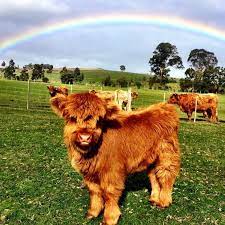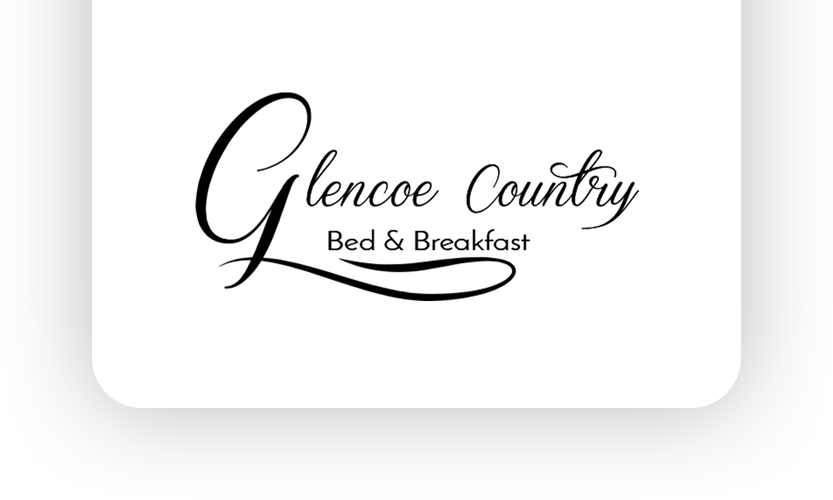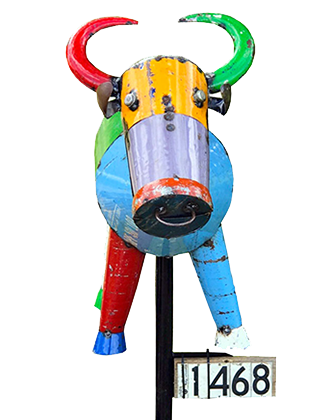 At Glencoe Country B&B, we have a small fold of Australian Highland Cattle. McTavish is our bull and the girls are Charlotte, Chloe and Hilda. We also have a 12-month-old heifer (Gracie) as well as Ted, who is a 6-month-old calf, plus Mr T, who is a 2-year-old steer. All our guests love the Highland cows and really enjoy hand feeding them bread, so here is a little information about the breed.
At Glencoe Country B&B, we have a small fold of Australian Highland Cattle. McTavish is our bull and the girls are Charlotte, Chloe and Hilda. We also have a 12-month-old heifer (Gracie) as well as Ted, who is a 6-month-old calf, plus Mr T, who is a 2-year-old steer. All our guests love the Highland cows and really enjoy hand feeding them bread, so here is a little information about the breed.
A fold is what a herd of highland cows is called. In Scots, they are known as Heilan Coo…but I call them my Woolly Coos. They originated in the Highlands and the Outer Hebrides islands of Scotland.
The classic image of a Highland cow is ginger in colour, however, they also come in other shades — red, yellow, brindle, dun, silver, white and also black. The horns grow differently in males and females, with the bulls being thicker, curving forward with only a small upwards rise near the tip, if any at all. The cows’ horns are more slender, and curve upwards. They are also longer than the bulls’ horns.
 Highland cattle are very cute. With their shaggy coats, just-out-of-bed hair, long curving horns and teddy-bear appearance, they are highly photogenic. These features also enable the cow to survive harsh winters in tough environments. Their thick woolly undercoats keep them warm, the longer guard hairs shed snow and rain. Long eyelashes and a thick fringe of hair protects their eyes from hail, rain, insects and biting winds, and they use their big horns to rake away snow in order to get to food (and for a good scratch!). The hair gets shorter in summer and is not as long when they are bred in Southern climates, such as the Australian Highland Cattle.
Highland cattle are very cute. With their shaggy coats, just-out-of-bed hair, long curving horns and teddy-bear appearance, they are highly photogenic. These features also enable the cow to survive harsh winters in tough environments. Their thick woolly undercoats keep them warm, the longer guard hairs shed snow and rain. Long eyelashes and a thick fringe of hair protects their eyes from hail, rain, insects and biting winds, and they use their big horns to rake away snow in order to get to food (and for a good scratch!). The hair gets shorter in summer and is not as long when they are bred in Southern climates, such as the Australian Highland Cattle.
They are the oldest registered breed of cattle in the world. The Highland Cattle Society was formed in 1884, with the first fold book recorded the year after. Written records of Highland cows go back a century before this, and their first written mention was in the 6th century. Archaeological finds take them back to 1200 BC. Queen Elizabeth II is patron of the Highland Cattle Society and her fold is considered one of the best in the world.
The Highland cow is not just superbly adapted to life in tough climates, but its meat is of exceptionally high quality. Having such long hair means that they do not need to store the waste fat you find in some other breeds of cattle. With 40% less fat and cholesterol than normal beef and a succulent, tender nature, it is prized in a lot of countries. Their milk generally has a very high butterfat content of about 10%, but they are predominately a beef cow.
 The Australian Highland Cattle are renowned for their friendly nature. Despite the fearsome horns, they have such a good social hierarchy and understanding of their own place within it that fights never happen. They make remarkable mothers, too — often breeding beyond the age of 18 and raising 15 or more calves. Highland cattle also have a longer expected lifespan than most other breeds of cattle; up to 20 years.
The Australian Highland Cattle are renowned for their friendly nature. Despite the fearsome horns, they have such a good social hierarchy and understanding of their own place within it that fights never happen. They make remarkable mothers, too — often breeding beyond the age of 18 and raising 15 or more calves. Highland cattle also have a longer expected lifespan than most other breeds of cattle; up to 20 years.
So, come for a visit to Glencoe Country B&B (for hotels near Cradle Mountain) and spend some time with these beautiful animals.
See our other blogs here



